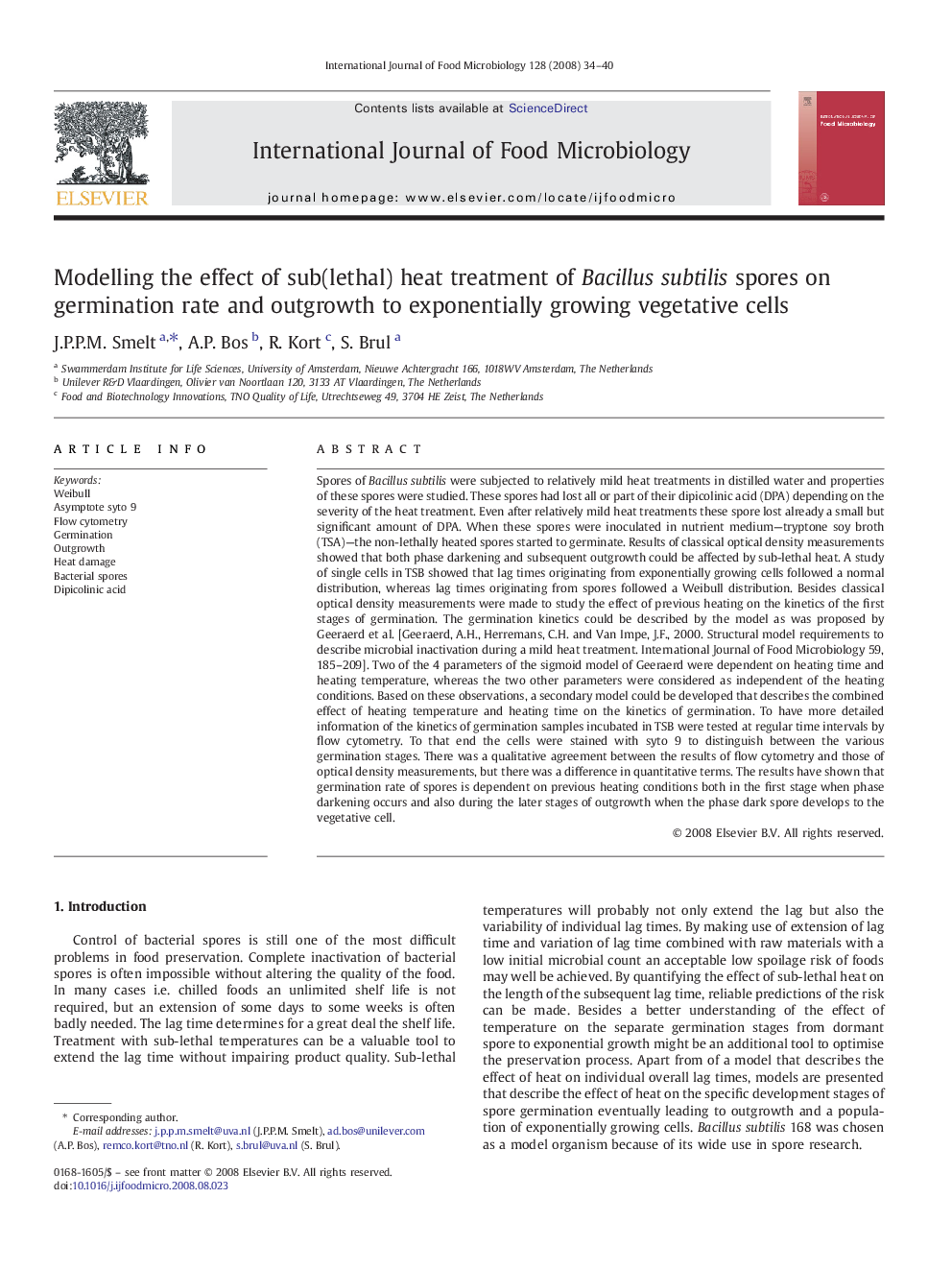| کد مقاله | کد نشریه | سال انتشار | مقاله انگلیسی | نسخه تمام متن |
|---|---|---|---|---|
| 4369641 | 1616717 | 2008 | 7 صفحه PDF | دانلود رایگان |

Spores of Bacillus subtilis were subjected to relatively mild heat treatments in distilled water and properties of these spores were studied. These spores had lost all or part of their dipicolinic acid (DPA) depending on the severity of the heat treatment. Even after relatively mild heat treatments these spore lost already a small but significant amount of DPA. When these spores were inoculated in nutrient medium—tryptone soy broth (TSA)—the non-lethally heated spores started to germinate. Results of classical optical density measurements showed that both phase darkening and subsequent outgrowth could be affected by sub-lethal heat. A study of single cells in TSB showed that lag times originating from exponentially growing cells followed a normal distribution, whereas lag times originating from spores followed a Weibull distribution. Besides classical optical density measurements were made to study the effect of previous heating on the kinetics of the first stages of germination. The germination kinetics could be described by the model as was proposed by Geeraerd et al. [Geeraerd, A.H., Herremans, C.H. and Van Impe, J.F., 2000. Structural model requirements to describe microbial inactivation during a mild heat treatment. International Journal of Food Microbiology 59, 185–209]. Two of the 4 parameters of the sigmoid model of Geeraerd were dependent on heating time and heating temperature, whereas the two other parameters were considered as independent of the heating conditions. Based on these observations, a secondary model could be developed that describes the combined effect of heating temperature and heating time on the kinetics of germination. To have more detailed information of the kinetics of germination samples incubated in TSB were tested at regular time intervals by flow cytometry. To that end the cells were stained with syto 9 to distinguish between the various germination stages. There was a qualitative agreement between the results of flow cytometry and those of optical density measurements, but there was a difference in quantitative terms. The results have shown that germination rate of spores is dependent on previous heating conditions both in the first stage when phase darkening occurs and also during the later stages of outgrowth when the phase dark spore develops to the vegetative cell.
Journal: International Journal of Food Microbiology - Volume 128, Issue 1, 30 November 2008, Pages 34–40